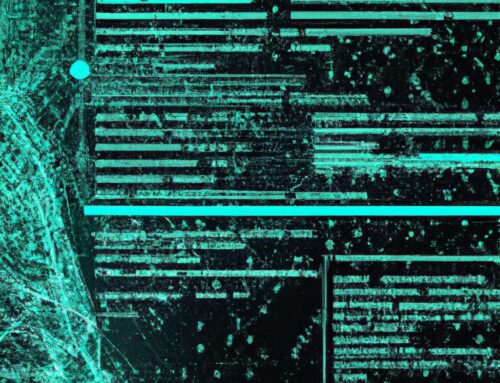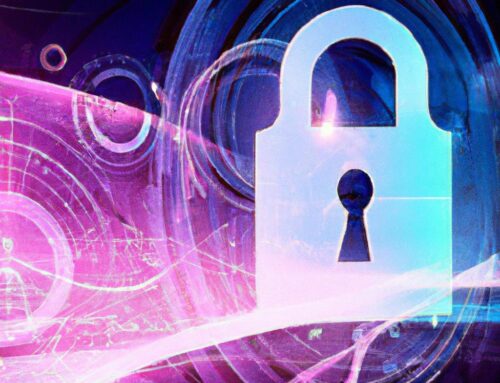In a world increasingly dependent on digital technology, non-profit organizations face unique challenges when it comes to protecting their sensitive data from cyber threats. While financial constraints may limit their ability to invest in top-of-the-line cybersecurity measures, there are still cost-effective strategies that can help ensure the safety of their valuable information. This article explores the importance of cybersecurity for non-profit organizations and offers practical tips for safeguarding their data on a budget.
Table of Contents
- Understanding the Cyber Threat Landscape for Non-Profits
- Implementing Cost-Effective Security Measures
- Training Staff for Cybersecurity Awareness
- Utilizing Free or Low-Cost Security Tools
- Q&A
- To Conclude
Understanding the Cyber Threat Landscape for Non-Profits
Non-profit organizations are increasingly becoming a target for cyber threats due to their valuable data and limited resources to invest in cybersecurity measures. Understanding the cyber threat landscape is crucial for non-profits to ensure the safety of their organization and the protection of sensitive information.
Here are some key points to consider when it comes to cybersecurity for non-profits:
- Identifying Weaknesses: Conduct regular audits to identify vulnerabilities in your systems and processes.
- Training Staff: Educate employees about cybersecurity best practices to prevent data breaches.
- Implementing Multi-Factor Authentication: Add an extra layer of security to your systems to protect against unauthorized access.
Implementing Cost-Effective Security Measures
When it comes to cybersecurity, non-profit organizations often face the challenge of ensuring safety while working within a limited budget. However, is not only possible but essential in today’s digital age. By prioritizing key areas of protection and utilizing efficient strategies, non-profits can strengthen their defenses against cyber threats without breaking the bank.
One effective approach is to focus on **employee training** as a proactive measure against cyber attacks. Educating staff members on best practices for data security and recognizing phishing attempts can significantly reduce the risk of breaches. Additionally, **implementing multi-factor authentication** for user accounts adds an extra layer of defense at minimal cost. By investing in **regular software updates** and **patch management**, non-profits can also stay ahead of potential vulnerabilities and ensure their systems are up to date with the latest security measures.
Training Staff for Cybersecurity Awareness
Non-profit organizations often operate on a tight budget, making it challenging to prioritize cybersecurity measures. However, with the increasing threat of cyberattacks, it is crucial for these organizations to ensure the safety of their data and systems. One cost-effective way to enhance cybersecurity within non-profits is to provide training for staff members on cybersecurity awareness.
By investing in training programs, non-profit organizations can educate their employees on the best practices for detecting and preventing cyber threats. These programs can cover a range of topics, including phishing scams, password security, and safe internet browsing habits. Through interactive workshops and online courses, staff members can learn how to recognize suspicious activity and respond appropriately to potential security breaches. By fostering a culture of cybersecurity awareness within the organization, non-profits can better protect their sensitive information and maintain the trust of their stakeholders.
Utilizing Free or Low-Cost Security Tools
For non-profit organizations looking to enhance their cybersecurity measures without breaking the bank, there are various free or low-cost security tools available to help safeguard sensitive data and information. By utilizing these tools effectively, non-profits can ensure safety and protect against potential cyber threats.
Some useful free or low-cost security tools that non-profit organizations can consider implementing include:
- Firewall software: Helps monitor and filter incoming and outgoing network traffic to prevent unauthorized access.
- Antivirus programs: Protects against malware, viruses, and other online threats that could compromise data security.
- Regular software updates: Ensures that all systems are running the latest security patches.
- Multi-factor authentication: Adds an extra layer of security by requiring additional verification before granting access.
Q&A
Q: Why is cybersecurity important for non-profit organizations?
A: Cybersecurity is crucial for non-profit organizations to protect sensitive data, maintain trust with donors, and safeguard against cyber attacks.
Q: What are some budget-friendly cybersecurity measures non-profits can implement?
A: Non-profits can consider using free or low-cost security software, conducting regular staff training on cyber threats, and implementing strong password policies.
Q: How can non-profits ensure their online donation processes are secure?
A: Non-profits can use encrypted payment systems, regularly monitor transactions for suspicious activity, and keep donor information confidential.
Q: What steps should non-profits take to prevent phishing attacks?
A: Non-profits should educate staff on how to recognize and avoid phishing emails, implement email authentication protocols, and regularly update security software.
Q: How can non-profits stay up-to-date on cybersecurity best practices?
A: Non-profits can join online communities, attend webinars, and subscribe to cybersecurity newsletters to stay informed on the latest trends and threats.
Q: What should non-profits do in the event of a cybersecurity breach?
A: Non-profits should have a response plan in place, notify affected parties promptly, and work with cybersecurity professionals to assess and mitigate the damage.
To Conclude
In conclusion, safeguarding the digital assets of non-profit organizations is crucial in today’s technology-driven world. By implementing cost-effective cybersecurity measures, such as strong passwords, regular software updates, and employee training, non-profits can protect their sensitive data from cyber threats. Remember, investing in cybersecurity now can prevent costly breaches and ensure the longevity of your organization. Stay vigilant, stay safe, and keep making a positive impact in the world. Thank you for reading!





